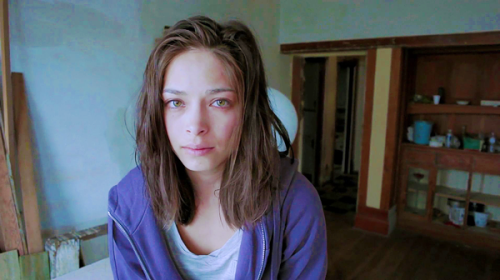How did a TV pilot about incest, drug addiction, and imprisonment lead to today’s writer getting Pixar’s “Inside Out” assignment? Read on to find out!
Genre: TV Pilot – Drama
Premise: We follow a group of adults in various stages of arrested development, highlighted by a strange man who’s secretly imprisoning his wife.
About: So you know that mega-hit from this past weekend, Inside Out? Well, it wasn’t just Docter who wrote it. One of the writers was Meg LeFauve. How did a relatively unknown writer score a writing gig on one of Pixar’s biggest movies? This pilot is how. Just goes to show that if you write something good, it might not sell, but it can open a lot of doors for you. “Girl in a Box” is said to have been LOVED by Disney and Pixar CCO, John Lasseter.
Writer: Meg LeFauve
Details: 66 pages
What I love most about this success story is that Meg LeFauve’s pilot about the terrors beneath the surface of our everyday lives couldn’t have been further from a children’s movie about animated emotions. Then why was she chosen for Inside Out? It’s because this industry celebrates one skill above all others – character development.
If you can write convincing interesting characters, you can do it in any genre. Sci-fi, Western, Drama, Comedy, Adventure, it doesn’t matter. Character creation is about finding the truth of the character, giving them unresolved issues in both their exterior and interior lives, and then throwing a bunch of shit at them and seeing how they react. To this end, Girl in a Box is a terrifying delight. With emphasis on “terrifying.”
Our seemingly unrelated cast of characters begins with Jane, a sort of zoned-out 24 year-old beauty who’s just moved into the neighborhood. When we meet her and her older, socially awkward husband, Frank, the two have crashed neighbor, John’s, home, so that Frank can find some clients for his one-man computer business.
It becomes clear to us that something’s off about Jane. She seems eternally zoned out. But that doesn’t stop John, who’s a few months away from marrying his wife, from flirting with her. Despite Jane’s beauty, flirting seems to be a new experience for her, but one she cannot reciprocate for long. There’s fear in the back of Jane’s eyes. That much is clear.
You see, Frank is imprisoning Jane. He keeps her in a box at night, and controls her every move. How long this has been going on, we can only guess.
Meanwhile, across town, we’ve got 20-something drug-addict Dara, who’s just moved back into town. Dara needs a place to shack up while she gets sober and hits up her cousin, Michael, a local attorney with a big future ahead of him. The two seem to have some kind of weird chemistry together, and we can tell that he’d never say no to her.
We also learn that when Dara was young, she snuck out at night when she was supposed to be babysitting Michael’s sister, Casey. While partying with her friends, Casey walked off and that was the last anyone ever saw of her. Needless to say, Dara’s never been forgiven from either Michael’s side of the family or her own. Which has only pushed her into using more.
Towards the end of the pilot, we figure out what’s going on. Jane, the girl in the box, is Casey. And neither Dara or Michael realize that their sister/cousin is only a few blocks away from where they live. Will they ever figure this out? And will Jane, who’s finally building up the courage to take chances, find a way out of this prison she’s lived in since she was a little girl?
The first thing that popped out at me about Girl in a Box was LeFauve’s VOICE. The writing here was stronger than the writing I’ve been seeing lately. And you don’t realize how plain writing is until something comes along that’s better. LeFauve’s stuff is better and it’s because her words and her choices have more life to them.
For example, when we first meet Jane, we hop inside of her POV. And the world becomes FLATTER, less colorful, because Jane’s entire life has been a nightmare. She hasn’t lived a minute of freedom in 20 years. So naturally, she’s going to see the world differently. That was clever.
And there were little things – breadcrumbs almost – to keep you turning the pages. Like when Jane goes to the bathroom at this party and slips one of the pretty seashell-shaped bars of soap into her pocket. We’re curious. Why would she do that? We want to know more about this girl.
The conversations between characters didn’t have that nailed down stiff feeling to them I read in a lot of scripts/pilots either. There was an electricity floating just beneath the dialogue. Like when John meets Jane out in the garden.
John is out there hiding from his fiancé and her mother. So right away, the scene’s got some charge to it. We’re not standing in the middle of a room full of people boringly sharing backstory. John’s got a secret and since we just saw Jane steal that bar of soap, we know she’s got a secret too. This is how you bring a conversation to life.
And it’s also because these characters are so distinct. Creating distinct characters takes a long time for screenwriters to learn. The problem is that you’re only one mind as a writer. So even though you’re switching back and forth between characters on the page, you’re still staying in your own brain.
This is why a common criticism a lot of new screenwriters get when people read their screenplay is: “All your characters sound the same.”
When creating characters, you have to define something unique about them, a dominant trait that makes them stand out. You do this for everyone and now, when you shift between characters, your mind shifts into that trait, allowing you to “speak” from a different perspective.
And we see that here. Jane is detached. Frank is socially awkward and creepy. Dara is mischievous. Michael is the golden boy trying desperately to live up to his reputation. There’s very little overlap in any personality traits here, which is another thing that helps each character feel like their own person.
This all might sound obvious to you. I can hear writers saying, “Duh, that’s what you do. You make characters different.” And yet time and time again when I read amateur scripts, the characters are laughably undefined. Either writers try to make them too complex, giving them so many traits that you don’t know which one defines them. Or they haven’t defined their characters at all, assuming you’ll get a “feel” for them because they, the writer, have a “feel” for them.
If you’re selling your characters on a “vague feeling,” I got news for you. Your characters suck.
Any time you read a script and each character in that script feels DIFFERENT, you know you’re reading someone who knows what they’re doing. Because most writers either don’t put the effort into making their characters unique, don’t think it’s important, or don’t know how. If you can nail character creation – if you can write 5 or more distinct characters that all feel like individual people – that’s when companies like Pixar start calling you.
[ ] what the hell did I just read?
[ ] wasn’t for me
[xx] worth the read
[ ] impressive
[ ] genius
What I learned: This is a really easy way to improve your character creation. Go through every character in your screenplay and assign them ONE DOMINANT TRAIT. Then make sure you hit on that trait over and over again. Han Solo – He’s a cocky motherfucker. Claire from Jurassic World – all she cares about is work. Anna from Frozen – she’s a goofball. Amy from Gone Girl. She was vindictive. The character will evolve out from that dominant trait to have a number of secondary traits. But you need that dominant trait as an anchor. That’s the trait the reader needs to identify that character.



